The Expert Speaks
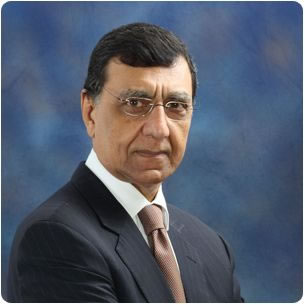
CEO Arif Habib Investments
Pakistan had halved its poverty rate from 2000 to 2015. In March 2020, Covid happened! Nearly 10 per cent of the population held informal, daily, or piece-rate jobs and they were the first to fall. Pakistan faced the possibility that poverty would increase sharply and reverse much of this century’s gains. Fast forward 14 months, and Pakistan’s GDP exceeded all expectations — even its own. The PTI government is on course to achieve 3.94 per cent annual GDP growth — more than double the IMF’s forecast and roughly triple the World Bank’s projection for the fiscal year ending in July 2021. Has the country recovered from the worst of the Coronavirus pandemic?
It is relatively intuitive to doubt the government’s claim. The IMF estimates GDP growth for 2020/21 at 1.5 per cent, while the World Bank puts the expected expansion at 1.3 per cent. Did the government decision of a complete lockdown for a brief period work in its favour?
Nasim Beg, CEO of Arif Habib Consultancy, projects that FY21 (Fiscal Year 2021) will close with a GDP growth of 4.577 per cent. beg is also Executive Vice Chairman of MCB-Arif Habib Savings & Investments Limited. With over 40 years of experience in the manufacturing and financial sector, he was part of the Securities & Exchange Commission of Pakistan (SECP) task force to develop the Voluntary Pension System. He is Chairman of the SECP sponsored Institute of Capital Markets and a Member of the Prime Minister’s Economic Advisory Council.
Your firm has projected GDP growth of 4.57 per cent for fiscal 2021. How confident are you about your estimates?
If you look at what is happening thus far, we are almost there. It is not because one sees some promises, but actual things that have happened on the ground. But, let me clarify, when we talk of a growth rate, it comprises three major components: agriculture, industry and then services, services having the largest share. If I speak about industry, obviously pre-Covid, we had a downturn in the industry. That was the aftermath of a significant devaluation of the rupee. The country had high interest rates, with doubling of interest rates in a very short period. That is a big dampener for the economy, especially on the industrial side.
A significant devaluation also puts you back. The bulk of our industrial activity is highly import dependent, barring textiles. Unfortunately this year we have had to import cotton in large quantities. The major bulk of automobile components have high levels of import content. We import steel, and we do not produce any, we import plastics, we import chemicals that go into cans or whatever, etc.
So at the end of the day, what we saw was a significant rise in automobile prices along with doubling of interest rates, which means if someone was paying Rs. 10,000 a month as an instalment for buying a car, it rose to over Rs. 20,000 a month, almost overnight.
When Covid struck, the government felt that we have to keep the essential industry going and essential included exports. Secondly, correlated to that, was a significant easing in the State Bank’s policy of literally taking the rates down to half. Not only that, coming out with some excellent packages to support industry to put in new equipment, etc.
It is interesting to note that the large scale industrial sector is doing far better than the small scale.
Yes.
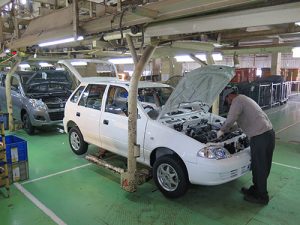
Now, is there any correlation between consumer activity, the local consumption of the locally manufactured stuff, or its export?
Oh, I think it is a combination. Take cement, for instance. The fact is that all of last year we had put in brand new capacity and we have been using a hundred per cent of the capacity, say 60 per cent is going to the domestic market, with 40 per cent going to export. But the domestic market demand is the highest ever as far as we are concerned. This is the historic highest and this is even before the new combined programme of all the housing. So this pent up demand came through, which is, I would say pre-Covid or the pre-new package demand.
I am just going to play devil’s advocate for a second, if you will. When you talk about cement and construction, do we see inequity with the large scale contractors building malls, and monumental apartment buildings? Where does the middle with 80 square yards stand? Do we have a lot of activity in the tertiary market and the secondary market, or is growth just for the top few?
Let me first discuss our sales in the southern zone. That is not restricted to Karachi or the major cities, they are going into the tertiary towns in Sindh and in Balochistan. So, they are not building plazas everywhere. It is fairly evenly divided, I would say.
Using automobiles as a marker, yes, the automobile sales did shoot up but even during the big downturn for cars, the motorbike sales did not suffer so much and they have gone up much higher. The reason would be two-fold. A, it has obviously been low income groups here taking off but also some shifting of demand from the person who was at the periphery of buying a car but no longer able to afford it, so going for a two-wheeler. Also, importantly, while the bank financing automobiles is in the formal economy, the motorbike is financed by the informal economy. There the financing rate did not change with the State Bank’s playing around with the interest rate, so say if they were paying 20 per cent per annum, they continue to pay 20 per cent per annum.
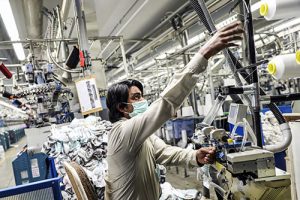
The Ehsaas programme was very commendable. We can debate if everybody who is supposed to get the money received it or not, but overall, it was an excellent programme. Globally it has been recognised, and I recently saw an interview of Dr. Sania Nishtar conducted by McKinsey’s.
We need to be doing a lot more on this front. This is just the beginning. It has to go back to the Benazir Income Support Programme, because that is when we created the basic structure and it has been improved upon. We are paying Rs. 2000 a month to the bottom of the pyramid and feel good about it, but really that is not enough because there are people who are not working, the economy does not create enough jobs.
We will be churning out 3 million young people every year, seeking jobs. If I take away the gender difference, those males, a million and a half males, we cannot produce those types of jobs, you understand my point.
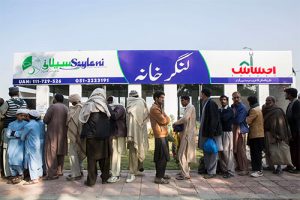
Our problem has been that over the last 30 to 40 years, we had de-industrialised. Even if you want to create industry and create jobs, you create industry in an environment of high levels of automation.
The Ehsaas programme needs to continue with enhanced amounts, just 2000 rupees is not enough. It is like I stop at the traffic light and give a beggar ten rupees and I think I have done a good job. That is what we are doing as a nation, I would say.
Now, coming back to agriculture, I know you were not too bullish on the agricultural sector, you are projecting about negative 15 per cent.
It is not that we are bullish or not. Those are ground realities. See, it is the cropping pattern that takes place in Pakistan. It is the weather conditions, it is the pests, etc, that attack us, the quality of seed that we produce. There are many factors that go into it, but just to give you a feel for what our view on agriculture is, I think it was in 2007 that I had my research team do a quick desktop study, and I said, okay, let us take the major crops, not livestock, etc. Take the four major products and what are the yields we are delivering. Let us say, if somehow we could go with the Egyptian yields, the number that came back was that we would have an exportable surplus of 38 billion dollars. So, it is not what we think of agriculture. We are just presenting the ground reality.
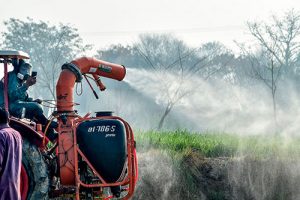
Let us look at the ground reality versus what the government was projecting. The critics say that our contraction numbers from last year were not accurate, and therefore our GDP growth looks better.
So, if I can just put one thing straight to you, we have gone down in production. If you take the GDP growth, it is a negative growth in cotton, but there is a significant improvement on last year versus the wheat crop this year. The accuracy of those numbers is difficult to measure, while wheat is fairly measurable. If the statistics are not accurate, then one could be wrong about it, because livestock is not that easy to measure. I mean, anyone can tell, okay, we have produced 20 million tons or 26 million tons of a commodity, i.e. you cannot play with that in any significant manner, but livestock to me is an area that I would not be able to say with the same confidence, if livestock and wheat have added to this sudden jump.
How about fiscal year 2022?
There is no reason to believe that we will not add to it. There is also a factor of good luck, because we were in a weak position prior to this. We did not have the same relative magnitude of migrant workers as India, so we did not have a similar problem. On textiles, were low value-added compared to India, Bangladesh and other countries; the demand that came was for low value, not for the high value-added during this time. Having captured back those markets, it now gives us a much better foothold to build on, and a significant portion of the machine refinance that the central bank has allowed has gone into textile equipment.
We have done the right and timely thing, we have always had capacity constraints at the higher end of textiles. There are exceptions of a few companies that have done extremely well, but generally speaking, that was holding us back.
Coming back to the growth targets on agriculture. Weather is a factor and there are currently political issues going on in water distribution. Now, there are some private sector companies that have joined together to produce quality seeds, but we also need to have the right pesticides and fertilisers. There is growing demand for services. On the industrial side, I would think that there will be some challenges in sectors other than textiles.
One of the things that continue to worry me is our current account. See, right now, we are about 23 billion dollars short, import versus exports, but that has more or less been made up by the remittances. The current account is often net negative, we borrow and then of course, next year you have to pay for that loan, plus the interest.
We need improved technology-based exports, we may not always be able to depend on remittances; they may go down over time. So we need to create enough ability to earn foreign exchange, not only to pay for the previous debt, but also to meet our current requirements.
Then you keep wondering why we keep going back to the IMF. Very simple, we do not earn enough foreign exchange. We consume more foreign exchange than we have ever been able to earn, and therefore we keep building up foreign exchange debt, so that is still a concern. Are we doing enough for creating export capacity, and import substitution?
One of our significant import items is energy. Now how much can we switch to hydro, wind, solar and how soon? On our import bill, food is still a significant item, edible oil as well as pulses, et cetera. Can Pakistan get its act in place to stop being import-dependent on food? That needs a lot of attention.
We do not produce our steel. We do not produce our plastics. We do not produce our chemicals, most pharmaceuticals are imported.
To answer your question, yes, next year we will lower our debt. I do not see a problem there, but it may come back to haunt us, if we do not boost our foreign exchange earnings. Green bonds are not a sustainable solution.
When our consumption of gas and electricity has reduced almost by 30 per cent, how is it that our manufacturing activities have grown so significantly?
The fact is we are producing cement 100 per cent to capacity, consuming more energy than we did in the past. So, maybe someone else has been deprived of that. The same goes for steel rolling, we are producing a lot more than we did in the past. Tractors are selling to full capacity. They are doing wonderfully well. The farm tractor is almost entirely indigenous. You do not need to import barely anything. So I do not have the answer to why there is a discrepancy. I can only tell you of the industrial activity that is happening. I have not done an investigative analysis on why there is this discrepancy.

Editor, Narratives



